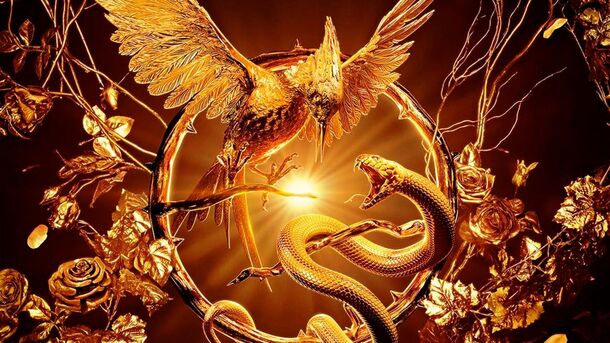The Hidden Meaning Behind the Title of The Ballad of Songbirds and Snakes

Are you coming to dig up some Katniss?
Summary:
- The Ballad of Songbirds and Snakes takes place 64 years before the main events of The Hunger Games trilogy.
- The title departs from its predecessors and bears a more compelling mystery.
- The Ballad of Songbirds and Snakes is a direct reference to the main characters of the story – Coriolanus Snow and Lucy Gray Baird.
In a much-anticipated debut, The Ballad of Songbirds and Snakes took audiences and critics alike by storm. Hailed as one of the most faithful cinematic adaptations of the book series, the film plunges viewers into a narrative that takes place 64 years before the first film and cleverly weaves in references to its predecessors.
Beyond its cinematic allure, the film serves as a gateway to a profound exploration of character complexity and the chilling roots of Panem's tyrannical rule. A visual masterpiece, The Ballad of Songbirds and Snakes invites viewers to embark on an immersive odyssey through the legacy of The Hunger Games.
In Suzanne Collins' literary realm, The Hunger Games franchise has always been synonymous with striking titles that quickly reveal their essence. But The Ballad of Songbirds and Snakes, a prelude to the trilogy's intense events, departs from this norm with its extended length and compelling obscurity.

Published in 2020, the story transports readers six decades into the past and immerses them in the aftermath of the first decade of The Hunger Games era. The story revolves around the 10th annual Games and introduces a teen Coriolanus Snow, portrayed with both ambition and subtlety by Tom Blyth in the film adaptation.
Snow, a name destined to embody tyranny in later stories, steps into the role of mentor to District 12 tribute Lucy Gray Baird. A predecessor to the iconic Katniss Everdeen, Lucy Gray immediately captivates audiences with her courage and melodic prowess, setting the stage for a compelling narrative.
What Is the Hunger Games Prequel’s Title About?
.jpg)
As expected by seasoned readers of The Hunger Games universe, the term "Snake" in the title aligns seamlessly with the portrayal of Coriolanus Snow, who is depicted with serpentine attributes to convey his stealthy and venomous influence over the citizens of Panem.
The dual nature of the word "Songbird" becomes clear when you delve into the character of Lucy Gray. It not only represents her extraordinary musical abilities but also echoes the themes of resistance woven throughout The Hunger Games series.
The inclusion of "Ballad" in the title elevates the narrative into the poetic realm, running through Lucy Gray's role as a metaphorical songbird who embodies the essence of storytelling through the captivating mediums of song and poetry.
How The Ballad Connects Its Title With the Movie

The direct connection between title and character is further emphasized by Peter Dinklage's Dean Casca Highbottom's recurring reference to Lucy Gray as a "songbird" throughout the narrative. This intertwining of Lucy Gray, the songbird, and Coriolanus Snow, the snake, creates a powerful and compelling dynamic.
This intricate ballet of symbolism echoes in the first Mockingjay installment, where poison is described as "the perfect weapon for a snake," solidifying the title's connection to President Snow's sinister nature.
At its core, The Ballad of Songbirds and Snakes, a new entry in the beloved trilogy, orchestrates a masterful interplay of literary devices, seamlessly blending metaphorical allusions, specific narrative elements, and overarching themes of resistance and defiance.
With poetic elegance, the title invites readers to unravel the layers of its meaning, establishing Collins' prequel as a compelling addition to The Hunger Games legacy.